
by Sandra Gulland | Jul 28, 2018 | Adventures of a Writing Life, Promotion, Publication, The Game of Hope
A good review can leave a writer depressed if it’s obvious the reviewer hadn’t read the book. Even rave reviews can be frustrating if there isn’t one quotable line. And then, of course, there are the “condemn with faint praise” reviews. Worse is the despair of not having any reviews at all.
It’s hard not to get emotional!
But then there are the supremely gratifying reviews by readers who get it. Nothing could be finer.
I felt this way about the review of The Game of Hope by Grace O’Connell in Canada’s publishing magazine, Quill & Quire. There are a number of quotable quotes, but this is my favourite:
Gulland has built a career writing historical fiction for adults, including a bestselling trilogy about Joséphine Bonaparte (Hortense’s mother). Her pitch-perfect balance of lush period details and character-driven narrative shines again in The Game of Hope.
I love this too:
In Gulland’s hands, Hortense’s life and history, as dramatic as it is, never overwhelm her character. Her friendships, her music, and her mother remain steady anchors. Even with Joséphine and Napoleon as supporting characters – ones so historically charged that they could easily take over a narrative – the story remains firmly Hortense’s.
What’s especially nice about this is that the reviewer understood some of the challenges of writing biographical historical fiction, likely because she is an author herself. :-)
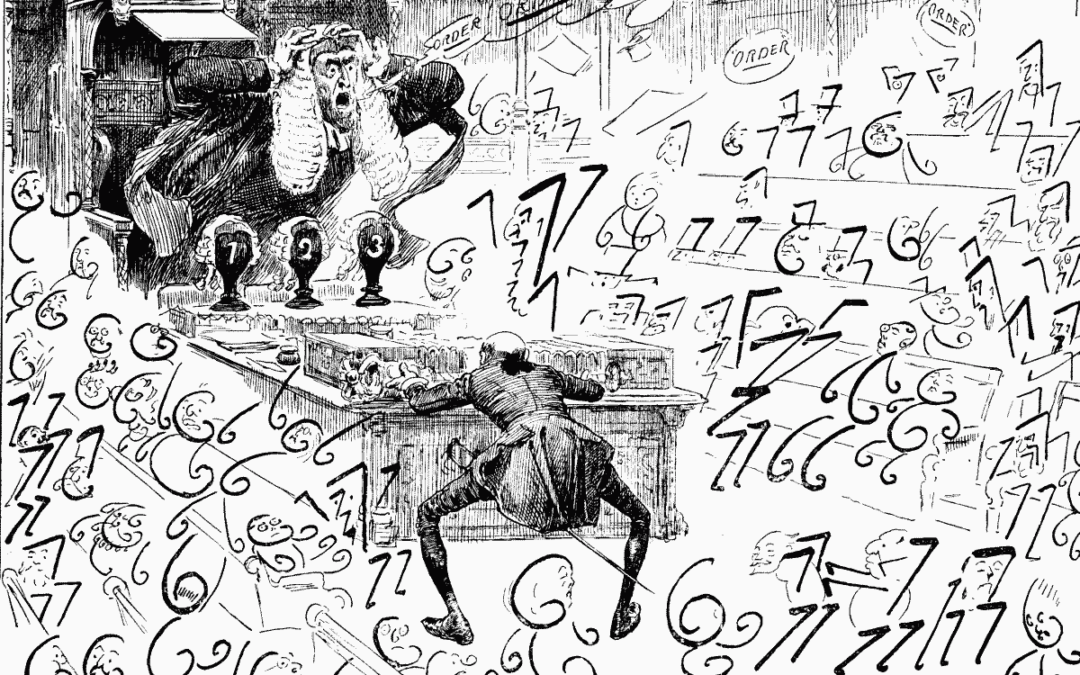
by Sandra Gulland | Jul 1, 2018 | Adventures of a Writing Life, Publication, The Game of Hope |
Last Tuesday was publication day in the U.S. for The Game of Hope. I told my husband that I’d been walking in circles all day. “I’m at sixes and sevens.”
He’d never heard the expression. I explained that it meant feeling out of sorts, disordered and in confusion.

In search of the origin of the expression “being at sixes and sevens”
Where had the expression come from? Certainly it makes no sense. There is nothing I like better than digging into history to find the origin of a curious expression, especially on a publication day when I am, in fact, at sixes and sevens.
And so, from Wikipedia:
An ancient dispute between the Merchant Taylors and Skinners livery companies is the probable origin of the phrase.The two trade associations, both founded in the same year (1327), argued over sixth place in the order of precedence. In 1484, after more than a century and a half of bickering, the Lord Mayor of London Sir Robert Billesden ruled that at the feast of Corpus Christi, the companies would swap between sixth and seventh place and feast in each other’s halls.
The two guilds, the taylors and the skinners, have continued to swap the sixth and seventh place to this day, resulting in seven centuries of confusion. Impressive.
Unlucky 13?
Another theory is that 6 + 7 = unlucky 13, but this seems a little simplistic to me.
Gambling away your life’s fortune?
A third explanation is that the expression originated in a 14th century game of dice: when betting on six and seven risked your losing entire fortune.
From Chaucer’s Troilus and Criseyde, 1374 — “Lat nat this wrechched wo thyn herte gnawe, But manly set the world on sexe and seuene.”
Given all this, my favoured explanation remains the ever-quarreling taylor and skinner guilds.There is nothing quite like a muddle that endures for centuries.
Part of the confusion about publication day for writers is that it is usually a quiet day, with little happening (especially if you live out of the country where your book is being published). There’s often quite a bit of commotion and stress leading up to that one day, and then bam! Nothing.
I am part of a wonderful fiction-writers’ collective; we support each other, consult about titles, covers, and various woes, but mainly we help broadcast news about member publications. As these posts started appearing on Social Media, I felt heartened: something was happening! I especially liked this post:
“Sandra hits the sweet spot, a book for young adults that adults of all ages can’t put down. And it’s fascinating.” — Martin Fletcher, author of The List, Jacob’s Oath, and a soon-to-be blockbuster Promised Land.
The Game of Hope in the Wild
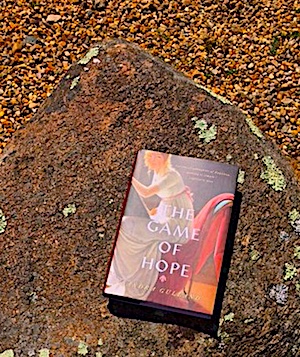
I also was greatly cheered receiving this photo taken in the US by Karen Salvatore, Evidence!
And now?

An ATM machine in New York city.
Half a week later, my husband and I are in New York/Brooklyn with our son, Chet, and his girlfriend, Kendra (daughter of Karen mentioned above).
We’ve been eating fabulous food, drinking fabulous drinks and having a merry time. On Monday I will lunch with my PenguinRandomHouse publicist, Jennifer Dee, and then go to Books of Wonder to sign some books
Some New York highlights, so far:

Dinner at Le Cou Cou. Delicious!!!
We followed this memorable meal with cocktails at Attaboy, considered one of the best cocktail bars in the world. (Check out this article in the New Yorker.) You wouldn’t guess its popularity from its secretive locked door.
 .
.

Inside was a small (very small!) dark bar with a lovely vibe. One tells the bar-tender — I would say drink creationist — the mood or flavour of the drink you have in mind, and are then surprised by an entirely original result. The cocktail I had was amazing!
 SaveSave
SaveSave
Follow this up the next day with a leisurely and supremely tasty brunch at Dumbo House (our son’s club), followed by a three and a half hour nap (!), followed by yet another delicious meal at Metta in Fort Green, Brooklyn, and I have to conclude that a foodie holiday in New York and Brooklyn is a perfect cure for being sixes and sevens.

SaveSave
SaveSave
SaveSave
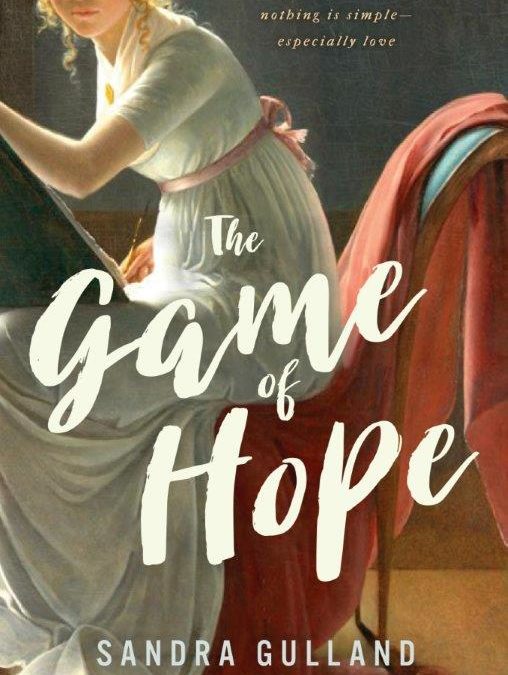
by Sandra Gulland | Apr 15, 2018 | Adventures of a Writing Life, On Plot, On Research, Publication, The Game of Hope, The Shadow Queen, The Writing Process, Young Adult Literature |
On November 2, 2011 (the day before my birthday), my agent, Jackie Kaiser, called to tell me that I’d been made a very tempting offer by Penguin to write two YA novels. One was to be about Josephine’s daughter Hortense, and the second was to be of my choosing.
My husband and I were in Mexico at the time, and two nights before I’d told him that I would never again contract to write a book “in advance.” I simply found it too stressful.
So the timing was a bit ironic. After Jackie’s call, I told my husband, “I’ve just been made an offer I can’t refuse.” Jackie had emailed me a photo of the box the offer had arrived in. Inside were the contract details and chocolates. How charming was that?

Even so, I thought about it carefully for two months. It takes me years (and years!) to write a novel, and I have to feel passionate about it. I have to fall in love with it. So I reread books about Hortense and covered our dining room table with plot points on index cards, considering. I needed to see if there was a story there, an enchanting story about Hortense’s teen years.
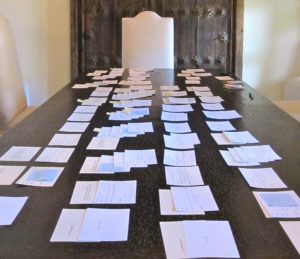
And there was. And it was one I very much wanted to write. By February 9, 2012, I had made up my mind. I would accept the offer. I would write a Young Adult novel about Hortense …
… although not immediately. I was on draft 6.1 of what I was then calling This Bright Darkness, soon to become The Shadow Queen. Plus, as I noted in that blog post of Feb. 9:
Somehow, I feel that I can do all of this all at once: finish This Bright Darkness, begin another adult novel set in the 17th century, write two YAs and a short novel for GoodReads, as well as launch my own e-book imprint.
(Reality has never been my strong suit.)
The Shadow Queen was published and my e-book imprint launched, but the “other adult novel set in the 17th century” had to be put on the back burner and the short novel for GoodReads was regretfully abandoned. Writing a novel requires full attention.
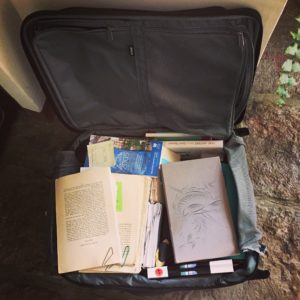
Soon I was carting research books on Hortense back and forth from Mexico to Canada.
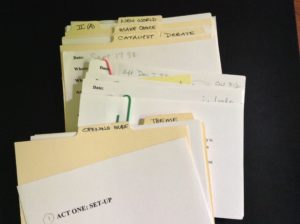
I organized my plot cards, shuffled and re-shuffled them.
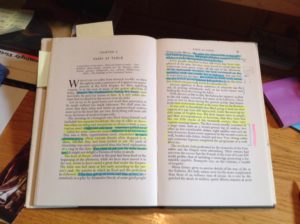
I researched like crazy.
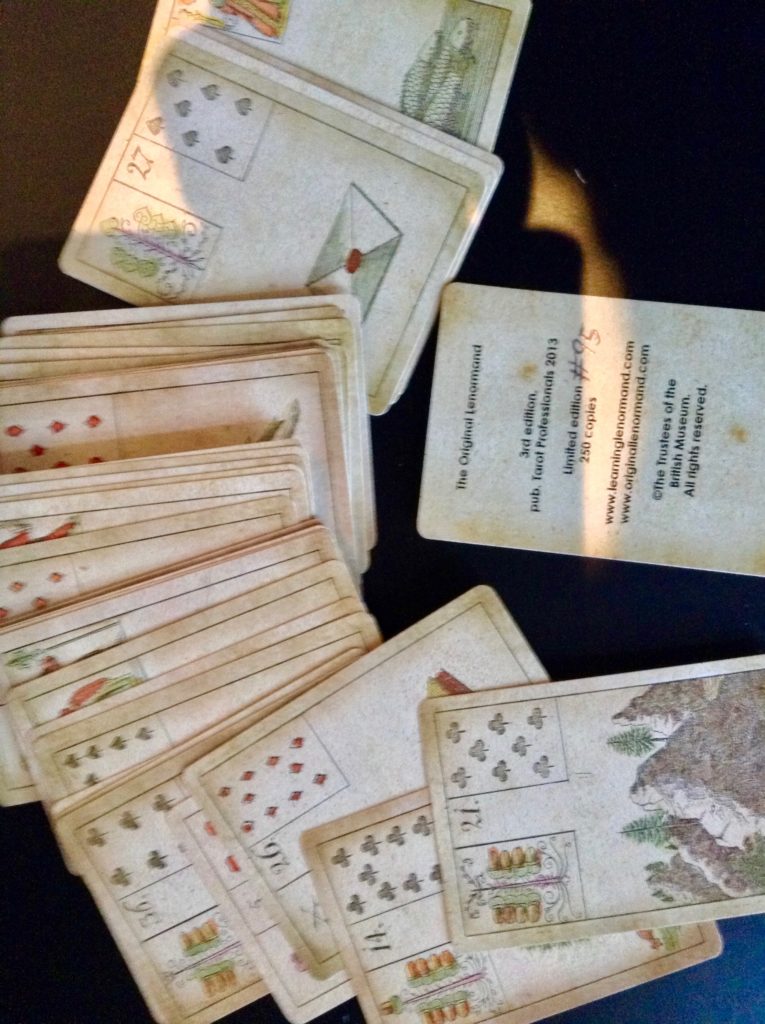
I bought a deck of The Game of Hope and began exploring. (Fun!)
On November 2, 2013, a full two years after receiving the offer from Penguin, I began the first draft.

This is draft 1.7 — that is, the 7th draft of the 1st draft.
Over the next four years, I made two research trips to France.
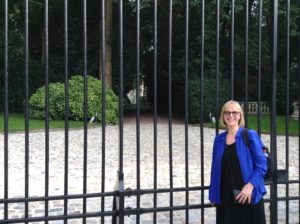
Here I am at the gates to Mortefontaine, the country estate of Napoleon’s brother Joseph.

This is a statue of Hortense at her home of exile in Arenenberg, Switzerland, overlooking Lake Constance, now a delightful museum devoted to her memory.

This is a photo of what remains of Madame Campan’s wonderful school in Saint-Germain-en-Laye.
Over time, I had the requisite stack of nine drafts it takes me to write a book.
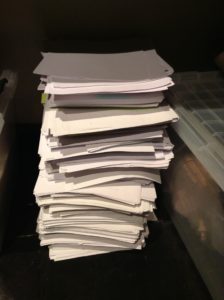
During the four years it took to write The Game of Hope, it went from being a novel told in the present tense to (at a fairly late stage) a novel told in the past tense. The title changed many, many times, and settled, finally, and happily, on The Game of Hope. The cover changed many times as well.

The Game of Hope, Hortense’s story, is now a book. For real. I’ve yet to hold it in my hands, but I will soon, in Toronto on May 1, the official Canadian publication day.
The amazement I feel about this long and magical process never grows old.
SaveSave
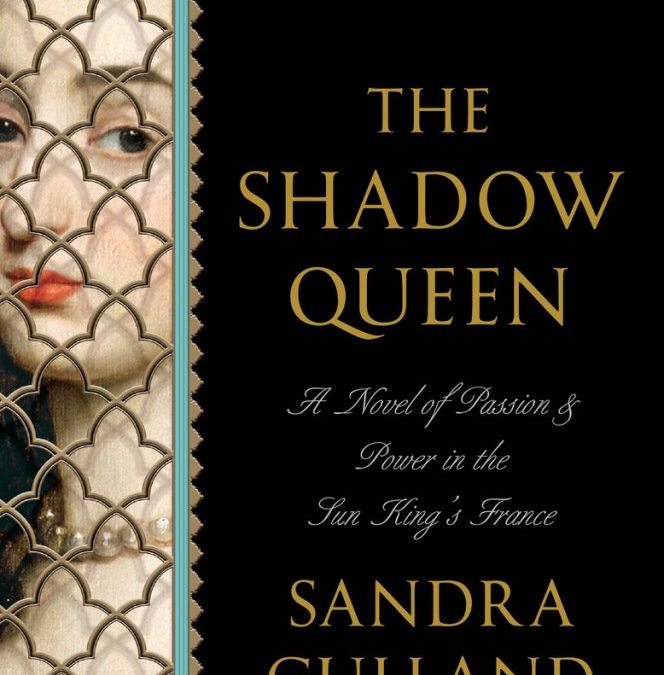
by Sandra Gulland | Mar 30, 2018 | Publication, Questions Readers Ask, Resources for Book Clubs, Resources for Readers, The Shadow Queen |
A significant number of early reviewers of my new novel THE SHADOW QUEEN have expressed displeasure with the title; they feel it is misleading. They expected the novel to be the story of the Sun King’s official mistress, Athénaïs, Madame de Montespan, a position often referred to as “the shadow queen.” The title led readers to believe that they were going to get one story, when in fact they got another. I apologize if they feel that they were mislead.
These readers were responding to the Advance Readers’ Copies (“ARCs”) of the novel. The hardcover, with cover-flap copy, will make it clearer what, in fact, the story is about, and I hope that this will dispel some of the confusion.
Why that title?
But to address the concerns of some of my readers: Why have I titled this novel The Shadow Queen?
The main character of the novel is Claude des Oeillets (dit Claudette), an impoverished young woman from the world of the theatre. Socially scorned and denounced by the church, she lives on the fringes of society. As well, as the daughter of a theatrical star, she exists in her mother’s shadow.
In contrast, Athénaïs, Madame de Montespan, lives at the heart of high society. She becomes Claudette’s obsessive passion, seeing in her a perfect life, a life without hunger and fear, a life of ease and beauty. Everything Claudette’s life is not.
The novel is about many things, but at its core is the relationship between these two woman, Claudette and Athénaïs, who are close in age and share many of the same interests, yet are worlds apart. In the end, they become dependent upon one-another. Claudette, as Athénaïs’s devoted and even start-struck servant, is willing to do anything for her—up to a point.
And it’s at that point that Claudette must step out of the shadows—and into the light of her own life.
Over the five years I was writing this novel, I considered many, many titles. In the end, I was very happy with the title The Shadow Queen, a title enthusiastically embraced by a group of 50 writers, a number of whom had read the novel and felt that it was appropriate.
I am touched by the passionate concern of my readers, even when critical. Of course I have been both surprised and disquieted that some have objected. I personally feel that the title The Shadow Queen captures the spirit of this story on a number of levels. Claudette exists in the shadow of her mother, a drama queen. When she joins Athénäis at court, she becomes her shadow, the shadow of the official “Shadow Queen.” And, although the story is very much about the ever-fascinating Athénäis—as well as about Claudette’s obsession with her and all that she represents—it’s really a metaphorical title, more than a literal one.
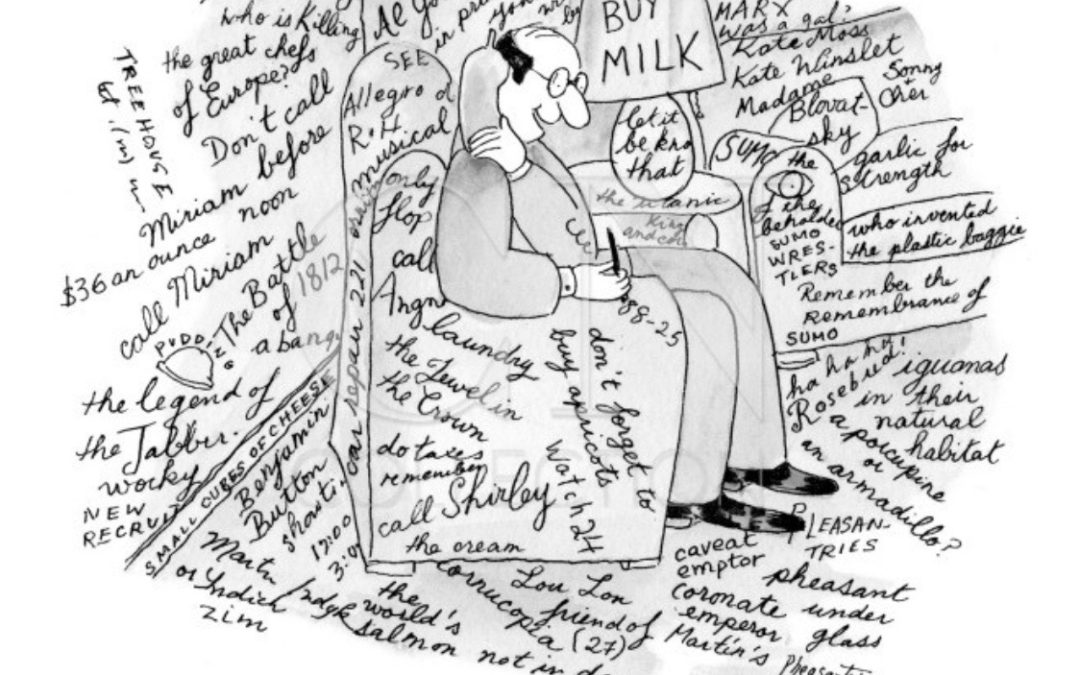
by Sandra Gulland | Jan 29, 2017 | Adventures of a Writing Life, Publication, Resources for Writers, The Writing Process |
Figuring out a novel’s “elevator pitch” — the summation of a story in a sentence or two — is invariably difficult for novelists, at least it is for me. My mind does not lend itself to reductions. I’m more of the expanding type. (Not an asset.) These 4 formulas — which I’ve gathered from hither and yon in decades of reading books on writing — are helpful in getting at the core of that unwieldy beast: a novel.
The 1-sentence formula
When _____ [OPENING CONFLICT]
happens to _____ [CHARACTER],
he/she has to _____ [OVERCOME CONFLICT]
in order to _____ [COMPLETE QUEST].
As applied to my next novel, The Game of Hope, I came up with:
Haunted by dreams of her dead father, a 15-year-old girl goes on a quest to find out if she was the cause of his death.
This is a tidy summary, but as with most one-sentence summaries, this doesn’t actually fit what actually happens in the novel.
The 3-sentence formula
_____ is about _____, who wants to _____.
The only problem is that _____.
As a result, he/she _____.
Yet, ultimately, he/she succeeds because _____.
One problem with this summary is that it gives too much away.
The 3-part book formula
1. The genre (i.e. “mystery novel”);
2. Parameters: what happens and what the reader getting into (“Seattle”, “a detective” “a dead boyfriend”);
3. Something left to the imagination (a dead body, a framed main character).
The Game of Hope is historical fiction for Young Adults. It’s about Josephine Bonaparte’s daughter Hortense, who hates her stepfather Napoleon and idolizes her dead father … until she finds out some unpleasant truths.
This is better, perhaps. It’s important to leave something unsaid, to tempt the reader.
The 5-part story formula
1. Character
2. Situation (What trouble that forces the character to act?)
3. Objective (The character’s goal.)
4. Opponent
5. Disaster (The awful thing that could happen.)
Make each of these elements specific.
Put them together to form two sentences.
Sentence 1: A statement that establishes character, situation, and objective.
Sentence 2: A statement—or question—that pinpoints the opponent and potential disaster.
Haunted by nightmares of her dead father, 15-year-old Hortense goes on a quest to find out if the father she idolizes is trying to tell her something. Was it her fault that he was executed? What she finds out is not at all what she expected, and more of this world than the next.
I think this is a better summary — but I don’t think I’ve nailed down the 5 elements yet.
And more …
I recently read Gotta Read It!: Five Simple Steps to a Fiction Pitch that Sells by Libbie Hawker (a book I recommend). She writes:
To construct a skeleton for your pitch, answer the following five questions as simply and blandly as you can: Who is your main character? What does she want? What stands in her way? What will she do, or what must she do, to achieve her goal? What is at stake if she fails?
Hawker’s book is about how to write a longer summation of your novel — one that might be used to send to a prospective agent, or be put on the jacket of your novel, on Amazon or in the publisher’s catalogue, for example. One begins with this short summary, the distillation of the novel, and then fleshes out “the skeleton” to represent the tone and subject of the novel truly.
The Game of Hope is soon to go into production, so it’s time for me to begin thinking how to frame the story, pitch it to readers. It’s never easy, but these guidelines help.
SaveSave
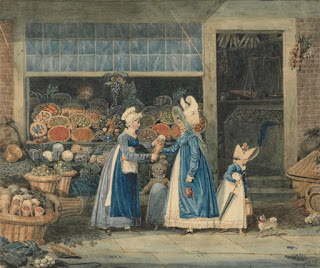
by Sandra Gulland | Jul 12, 2015 | Adventures of a Writing Life, Publication, Resources for Readers, The Writing Process |
Summer has turn glorious and I procrastinate from working on Draft 5 by ducking out to the garden. I’m reading Wayson Choy’s Not Yet; a Memoir of Living and Almost Dying: so very good! I heard him speak this week: mystical.
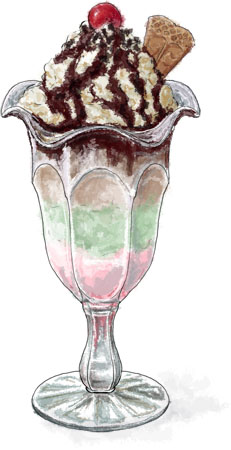
Links for writers …
• On Writing & Publishing, & Everything In-Between. My very own Flipboard magazine. A popular article this week was:
• How Publishers Make Decisions About What to Publish: The Book P&L. This article is by Jane Friedman, who knows the business inside and out.
• Medical Advice About Bathing in 1813
• Medical recipes in the 18th century

• Dining in July 1815
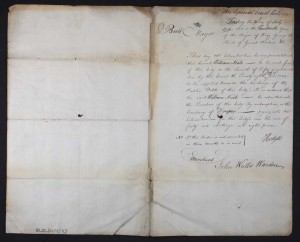
• The Diaries of Miss Fanny Chapman. Delicious!
Links for Napoleonistas …
• Napoleon’s escape ship found off Cape York
Links for all us Procrastinators …
• Structured Procrastination: Do Less, Deceive Yourself, And Succeed Long-Term.
Links for self-publishers …
• 4 Ways to Create an ePub eBook
• Demystifying Keywords, Categories, and Themes for Amazon Indie Authors
Have a great week!







 .
.




















